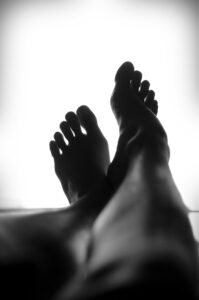Treatment for Plantar Fasciitis
More than anything else, having discomfort that stops you from moving might interrupt your usual everyday life. If the bottom of your heel is causing you discomfort, it's worth getting checked out. Your pain might be caused by an irritated plantar fascia ligament. You may find relief from nonsurgical therapy, but if the inflammation is severe, you may wish to consider surgery. This article delves deeper into Plantar Fasciitis, including its symptoms, causes, treatment options, and healing time.
The fascia is the thick, web-like ligament that links your heel to the front of your foot. It helps you walk by acting as a shock absorber and supporting the arch of your foot. Plantar Fasciitis is one of the most common orthopaedic issues. Your plantar fascia ligaments are under a lot of strain from your regular activities. Placing too much pressure on your foot might cause ligament damage or a tear. Inflammation of the plantar fascia causes heel stiffness and discomfort. The source of plantar fasciitis pain is still unknown. A 2003 study suggested that the illness might be caused by plantar fascia degradation rather than inflammation. Plantar fasciosis is a better word than fasciitis, which means "inflammation of a fascia."
The most common complaint of patients suffering from this is discomfort at the bottom of the heel or, in some cases, at the bottom of the mid-foot. It normally only affects one foot, although it might affect both. This foots pain increases progressively over time. The discomfort might be subtle or acute. Some people have a burning or aching sensation on the sole of their foot, radiating outward from the heel. The discomfort is frequently worse in the morning when you take your first steps out of bed or after sitting or sleeping for a long period of time. Due to heel stiffness, climbing stairs might be quite difficult.
Pain may worsen after extended exercise owing to increased irritation or inflammation. Plantar fasciitis typically causes discomfort after ending an activity rather than during it. It isn't always caused by heel spurs. Doctors used to assume that heel spurs produced discomfort in persons with plantar fasciitis, but this is no longer the case.
Another mechanism that can cause plantar issues is overstretching or misuse of this ligament, although a tear or minor rips in the fascia tissue can also cause discomfort. Your foot anatomy may also predispose you to plantar fasciitis. Active men and women between the ages of 40 and 70 are most likely to develop plantar fasciitis. (What to Know About Plantar Fasciitis, n.d.)
Plantar Fasciitis treatment: What is the most effective method?
There can never be a singular therapy for plantar fasciitis since there are so many distinct causes of heel pain. The plantar fasciitis therapies listed below are what we offer at Fully Fit Therapy.
Massage
It is easy to massage your plantar fascia as well as your calf with a massage session from us. When you are away from your therapist, you can also use various sized balls and foam rollers to hit those spots. Massage for plantar fasciitis should include all the muscles along the back of your body, – not just the plantar fascia, so make sure you use a foam roller on the rest of your leg and back.
Stretching
The calf muscles are connected to the plantar fascia via an extension from the Achilles tendon, and I always find that they are tight in my patients who complain of heel pain. As with the massage, you should not only include stretches for the plantar fascia but also for the rest of the leg and back. A word of caution: – you can make the symptoms worse if you overstretch.
Taping
There are several variations of taping techniques that you can try. The one thing that they all have in common is that they try and off-load the plantar fascia by supporting the inside arch of the foot and preventing the foot from rolling inwards excessively when you step on it. One of the most commonly used is the arch tape technique using K-tape.
Exercises
Lastly, and this is the most important aspect, do exercises to strengthen the arch in your foot to take the stress off of your fascia and reduce inflammation. Exercises that include this are pen pick ups and towel scrunches, which both use your toes to wrap around the pen or towel, thus activating your intrinsic foot muscles. This in time will help reduce your plantarfascia pain.
Book a Session
Fill out your details below to Instantly claim £20 off your first massage or injury treatment session!
